Learn how to select the best paper for business cards that matches your brand. From thickness to finish, discover everything about business card paper types to make the right choice for your company.
I. Introduction
Ever picked up a business card that felt so good in your hands that you just had to keep it? That’s no accident – it’s the power of choosing the right paper. In today’s business world, where digital often comes first, a well-made business card with quality paper types for business cards can make your brand stand out.
Think of your business card as a handshake. Just like a firm, confident handshake leaves a lasting impression, the right business card stock tells people something about you before they even read what’s on it.
In this guide, we’ll show you:
- How to pick the perfect paper for your cards
- Which weights and thicknesses work best
- What finishes match your brand
- How to make smart choices for your budget
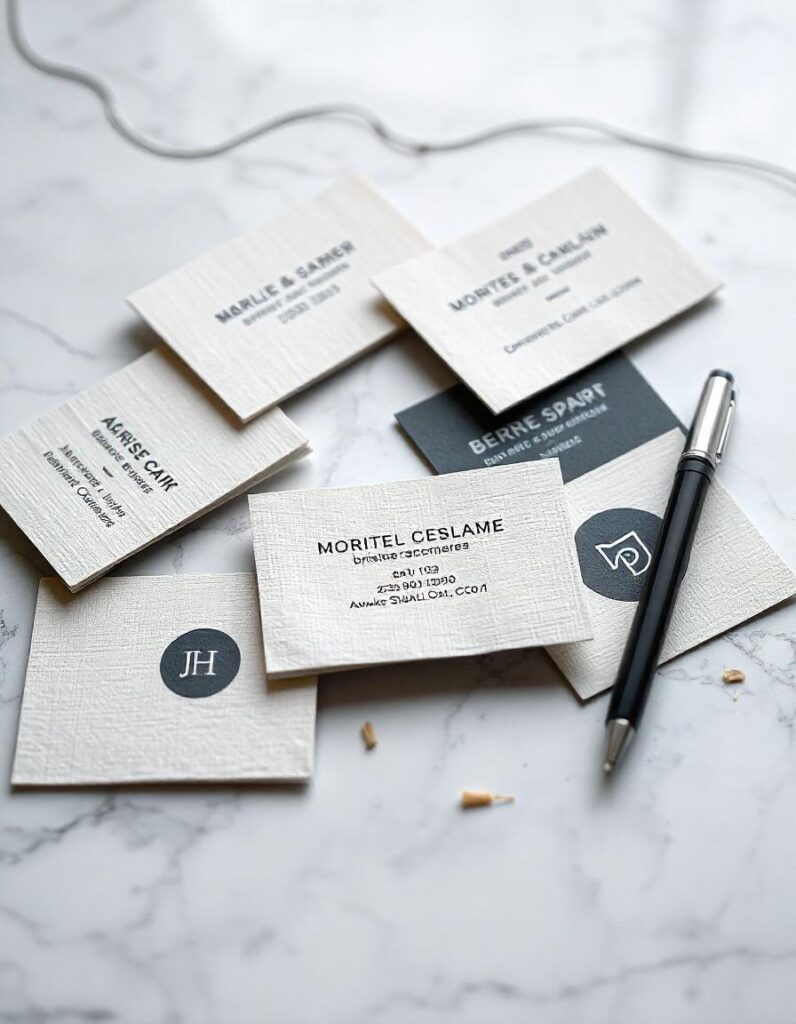
II. Understanding Business Card Paper Basics
Why Paper Choice Matters
- First Impressions
- Your card’s feel creates instant judgments
- Quality paper suggests quality business
- Poor paper can harm your image
- The Touch Factor
- Good business card paper thickness creates a memorable feel
- Texture makes your card stand out
- Weight gives confidence in handling
- Lasting Power
- Strong paper stays fresh longer
- Quality stock resists bending
- Better papers handle writing well
Key Paper Characteristics
Weight and Thickness
Understanding business card paper weight is crucial:
- GSM (Grams per Square Meter):
- Light: 250-300 GSM
- Standard: 300-350 GSM
- Premium: 350+ GSM
- Point System:
- 14pt: Basic cards
- 16pt: Standard choice
- 32pt: Luxury feel
The business card paper GSM you choose affects how your card feels and lasts. Think of it like this: standard printer paper is about 80 GSM – your business card should feel much more substantial.
Paper Finishes
Different business card paper finishes create different effects:
- Matte Finish:
- Smooth, non-shiny surface
- Perfect for writing notes
- Professional look
- Best for traditional businesses
- Glossy Finish:
- Shiny and bright
- Makes colors pop
- Great for photos
- Harder to write on
- Uncoated Paper:
- Natural paper feel
- Easy to write on
- Less protection
- Good for eco-friendly brands
Each finish has its place. For example, if you’re wondering “can you write on glossy business card paper?” – you can, but it’s harder, so choose matte if note-taking is important.

III. Matching Paper to Your Brand and Industry
The Power of Paper in Brand Identity
Your brand’s personality shines through every detail – including your business card paper type. Let’s see how different papers match different brand styles:
Classic and Traditional Brands
If your business values tradition, choose:
- Thick, cotton-based business card stock
- Clean matte finish
- Simple, elegant texture
- 16pt-18pt thickness
Perfect examples:
- Law firms using cream-colored stock
- Banks choosing bright white, thick paper
- Consulting firms picking subtle linen texture
Modern and Bold Businesses
For contemporary brands:
- Premium business card paper
- High-gloss finishes
- Unique textures
- Bright white base
Real-world uses:
- Tech startups using ultra-bright stock
- Design agencies picking metallic finishes
- Digital companies choosing synthetic papers
Luxury and High-End Brands
When showing premium quality:
- 32pt ultra-thick paper
- Soft-touch finishes
- Multilayer papers
- Special coatings
Success stories:
- Jewelry stores using pearl-finish paper
- Hotels choosing triple-layer cards
- Real estate luxury agents picking black core stock
Industry-Specific Paper Choices
Different sectors need different papers. Here’s what works best:
Medical and Healthcare
- Uncoated, thick paper
- Easy-to-write surfaces
- Anti-microbial options
- Clean, bright white
Creative Industries
- High-gloss finishes
- Special effect coatings
- Textured surfaces
- Color-core options
Luxury Services
Choosing business card paper for luxury brands means:
- Soft-touch laminates
- Heavy 32pt stock
- Premium finishes
- Multiple layers
Understanding Your Audience
Match your paper to your clients:
- Young professionals: Modern, sleek finishes
- Traditional clients: Classic, thick stock
- Eco-conscious: Recycled papers
- High-end clients: Premium materials
IV. Specialty Papers and Finishes
Premium Coating Options
Spot UV Coating
This special finish adds:
- Glossy raised areas
- Contrast with matte backgrounds
- Highlight key information
- Professional shine
Real benefits:
- Makes logos pop
- Protects important areas
- Creates visual interest
- Adds perceived value
Soft-Touch Lamination
This luxury finish provides:
- Velvet-like feel
- Subtle color softening
- Fingerprint resistance
- Premium appearance
Why it works:
- Creates memorable tactile experience
- Protects the card
- Shows attention to detail
- Suggests quality
Plastic Card Options
Modern synthetic papers offer:
- Complete water resistance
- Tear-proof durability
- Bright color display
- Long-lasting quality
Best uses:
- Outdoor businesses
- Sports facilities
- Restaurants
- Beach-related services
Textured Stock Options
Exploring different business card paper textures and their impact:
Available textures:
- Linen (classic weave pattern)
- Felt (soft, fuzzy surface)
- Laid (parallel line texture)
- Pearl (shimmering finish)
How textures affect perception:
- Linen suggests tradition
- Felt shows creativity
- Laid paper hints at formality
- Pearl indicates luxury
Success stories:
- Art galleries using textured matte
- Spas choosing pearl finish
- Financial advisors picking linen
- Designers using custom textures
Cost Considerations for Special Finishes
Investment levels:
- Basic textures: +20% cost
- Spot UV: +35% cost
- Soft-touch: +40% cost
- Custom finishes: +50-100% cost
Value tips:
- Order more for better rates
- Combine finishes wisely
- Consider client value
- Match finish to usage
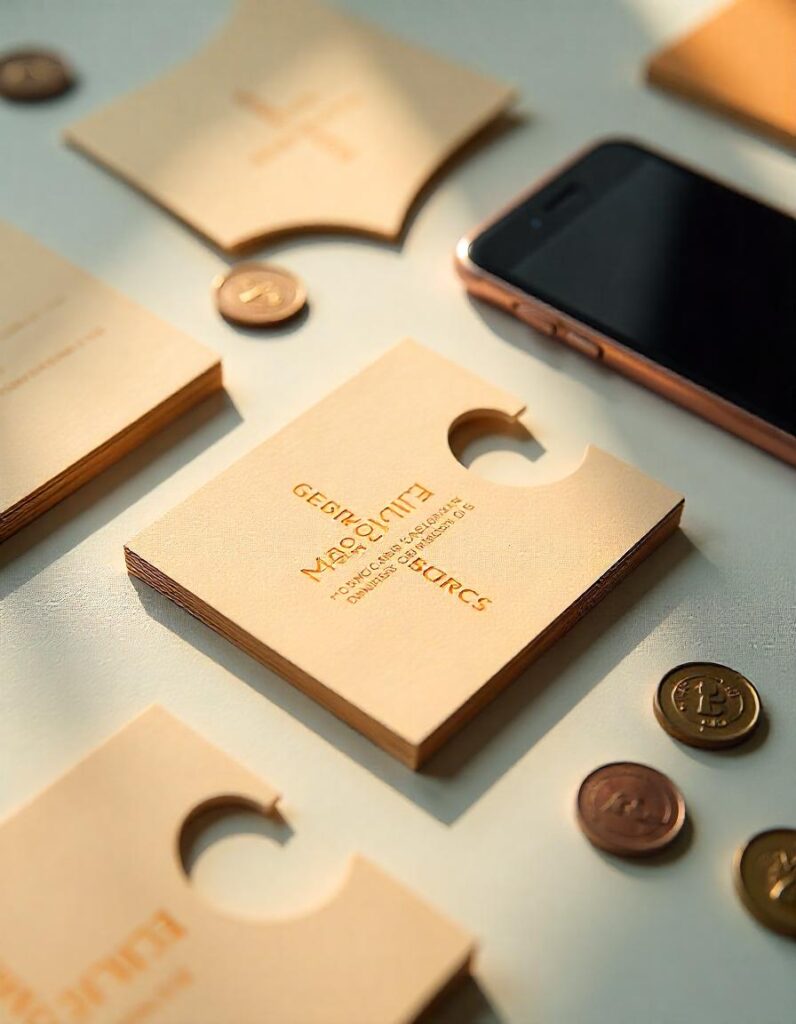
V. Sustainability and Accessibility Considerations
Eco-Friendly Business Cards
Selecting eco-friendly paper options for business cards takes on greater significance in today’s printing world. These choices not only protect our environment but also give your business cards a distinctive professional look. The best part? Modern eco-friendly paper matches traditional options in both quality and appearance.
Recycled paper has come a long way in recent years. Thanks to modern technology, today’s recycled paper rivals traditional stock in texture, durability, and print quality. You’ll find recycled options in various weights and finishes, letting you achieve the exact professional look you want for your cards. The subtle texture of recycled paper can even add an interesting touch that makes your cards stand out.
FSC-certified paper marks another step forward in responsible printing. This certification ensures your paper comes from properly managed forests. The quality speaks for itself – FSC-certified paper provides an excellent printing surface and gives your business cards a premium feel. Many printers now stock these papers in multiple weights, from standard 14pt to luxurious 32pt options.
Alternative materials open up exciting possibilities for your business cards. Bamboo paper offers remarkable strength and a unique texture that catches attention. Hemp paper impresses with its durability and distinct natural appearance. Both materials take ink beautifully and allow for professional-grade printing. The natural fibers in these papers create subtle patterns that make each card slightly unique.
Green printing goes beyond paper choice. Soy-based inks have revolutionized eco-friendly printing, offering rich colors that pop on any paper type. These inks reduce environmental impact while providing excellent coverage and durability. Water-based coatings protect your cards without harsh chemicals, ensuring they last long while staying earth-friendly.
Creating Accessible Business Cards
Business cards should work for everyone who receives them. Traditional designs often present challenges for people with visual impairments or other accessibility needs. Simple changes can make your cards more inclusive without sacrificing style.
Clear, readable text makes a huge difference in card accessibility. Choosing the right font size ensures your contact information reaches all readers. High contrast between text and background colors helps your information stand out. Clean layouts prevent confusion and make important details easy to find.
Modern technology enhances accessibility further. Braille additions let visually impaired recipients read your cards independently. Raised printing adds texture that guides fingers to important information. These tactile elements can complement your design while making your cards more functional for everyone.
Digital integration bridges traditional and modern communication. QR codes open up endless possibilities, linking to accessible online versions of your contact information. Digital alternatives ensure everyone can save and use your details in their preferred format. This blend of physical and digital makes your cards more versatile and user-friendly.
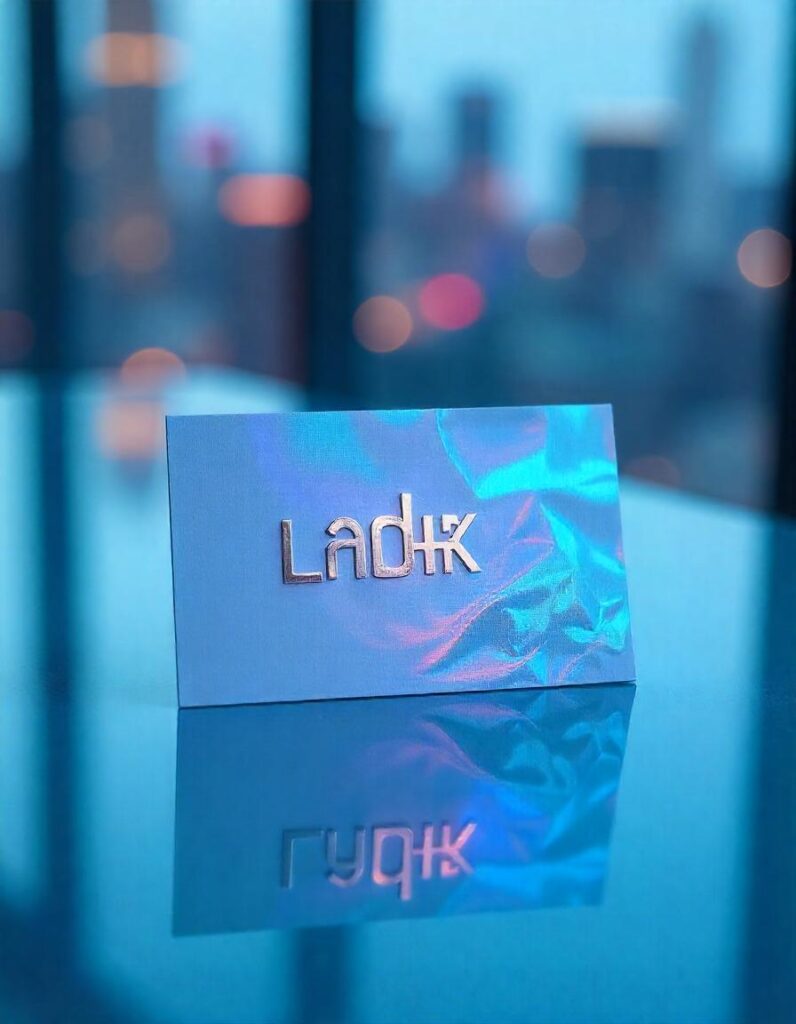
VI. Budget-Friendly Options
Making Smart Paper Choices Within Your Budget
Choosing the right business card paper doesn’t mean spending a fortune. Whether you’re just starting out or running an established business, understanding paper options at different price points helps you make the best choice for your needs.
For those working with a modest budget, standard business card stock options offer remarkable quality. The 14pt and 16pt papers provide a solid foundation for professional cards. These papers hold color well, maintain their shape, and create a respectable first impression. The standard weight feels substantial enough in hand while keeping costs manageable.
Moving into mid-range options opens up more possibilities for your business card paper finishes. At this level, 18pt stock delivers enhanced durability and a more substantial feel. The additional thickness makes a noticeable difference when someone handles your card. You’ll find more texture options available too, from subtle linen patterns to sophisticated eggshell finishes. These papers take both matte and glossy coatings beautifully, letting you create exactly the look you want.
For businesses ready to invest in premium materials, the best paper for business cards includes 32pt ultra-thick stock and specialty finishes. These papers make an immediate impression with their substantial weight. Soft-touch coatings transform the surface into a velvety feel that people love to handle. Spot UV effects create striking contrasts between matte and glossy areas. While these options cost more, they can prove worthwhile for businesses where each client relationship carries significant value.
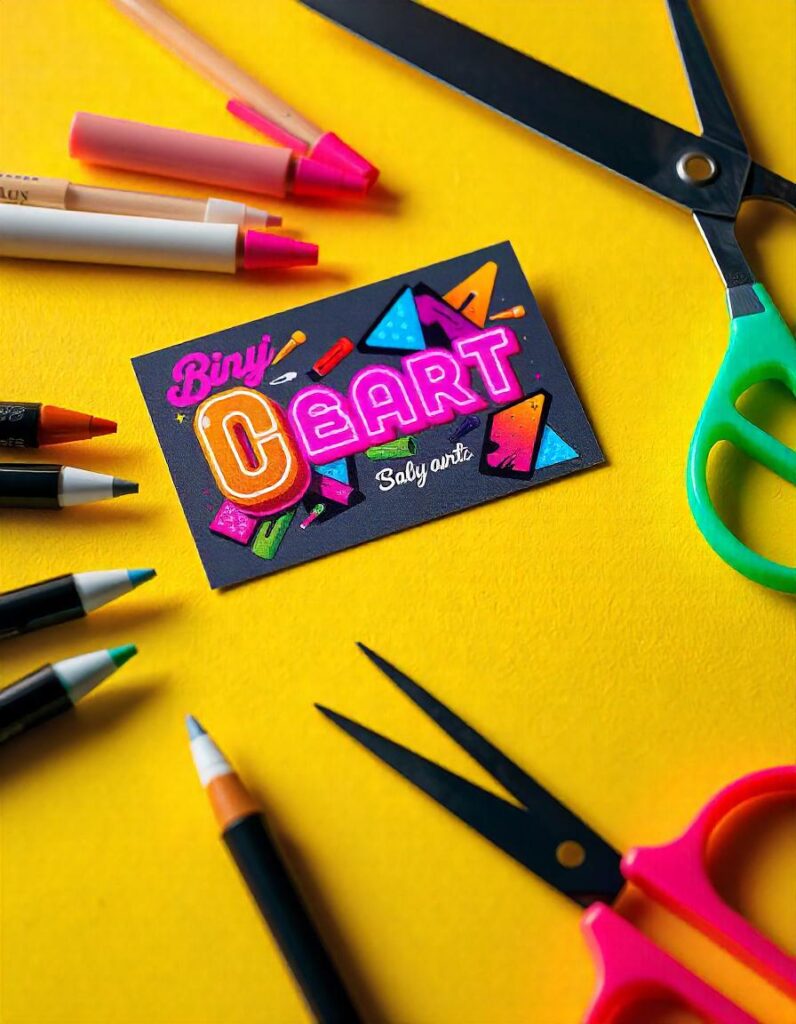
VII. Professional Printing Considerations
Choosing Between Home and Professional Printing
The question of where to print your cards deserves careful thought. While home printing might seem convenient, understanding the different business card paper types available through professional printers can help you make a better decision.
Professional printing services offer access to paper types for business cards that you simply can’t find for home printers. They stock everything from standard stocks to specialty papers, each carefully selected for business card production. Their industrial-grade printers ensure consistent color reproduction and sharp detail that home printers struggle to match.
When selecting a professional printer, look beyond basic pricing. Ask about their business card paper weight options and finishing capabilities. A good printer should show you physical samples of different papers and finishes. They should explain how each option might affect your design and help you choose the right combination for your needs.
Many printers offer color matching services too. This matters when your brand colors need to look exactly right. They can also guide you on how different business card paper finishes affect color appearance. A glossy finish makes colors pop more vibrantly, while matte finishes create a more subdued, elegant look.
VIII. FAQ Section: Your Business Card Paper Questions Answered
What is the best paper for photos on business cards?
For cards featuring photos, high-quality glossy or silk paper provides the best results. Photo images look crisp and vibrant on these surfaces, with rich color reproduction and sharp detail. A 16pt glossy stock offers an ideal balance between image quality and durability.
What is the most durable business card paper?
The most durable business card paper type comes in several forms. Professional-grade 32pt stock offers excellent durability for traditional paper. For extreme conditions, synthetic papers provide water resistance and tear resistance. Many businesses choose a middle ground with 24pt stock featuring protective UV coating.
Can I write on glossy business cards?
When asking “can you write on glossy business card paper?“, the answer depends on your needs. Standard pens struggle on glossy finishes. If note-taking matters, choose either matte finish or request an uncoated back side. Some special pens work on glossy surfaces, but they take longer to dry.
What is the standard business card size?
In the United States, standard business cards measure 3.5 x 2 inches (89 x 51 mm). European cards typically measure 85 x 55 mm. These sizes fit perfectly in wallets and card holders, making them convenient to carry and share.
How much do business cards cost?
Prices for business card paper options vary widely:
- Basic 14pt stock: $20-30 for 500 cards
- Premium 16pt paper: $40-60 for 500 cards
- Luxury 32pt stock: $100-150 for 500 cards Special finishes or custom options may increase these base prices.
Where can I find design inspiration for my business cards?
Look for inspiration in several places:
- Professional design websites like Behance
- Business card galleries online
- Industry-specific examples
- Your competitors’ cards
- Professional design magazines
How thick should my business cards be?
Understanding business card paper thickness helps your choice:
- 14pt: Standard thickness
- 16pt: Professional grade
- 24pt: Premium feel
- 32pt: Luxury weight Choose based on your brand image and budget.
How do I pick the right paper finish?
Selecting the right business card paper finishes depends on use:
- Matte: Professional look, easy to write on
- Glossy: Great for photos and bold colors
- Soft-touch: Luxury feel, fingerprint resistant
- Uncoated: Natural feel, excellent for writing
Are eco-friendly business cards good quality?
Modern eco-friendly paper options for business cards match traditional papers in quality. Recycled stocks now offer excellent printing surfaces and durability while helping the environment. Many high-end brands choose these options specifically for their unique character.
How long do business cards last?
Longevity depends on paper choice and storage:
- Standard 14pt: 6-12 months of regular use
- Premium 16pt: 1-2 years
- Luxury 32pt: 2+ years Proper storage in card holders extends life significantly.
Conclusion
Your Business Card Tells Your Story
Think back to a business card that impressed you. Maybe it was the way it felt in your hand, or how professional it looked. That’s the power of choosing the right business card paper.
You don’t need the fanciest paper out there. You just need paper that makes your card look good and feel right. Sometimes, a simple business card stock with a clean matte finish works better than all those fancy options.
When someone takes your card, they’re taking a piece of your business with them. Make it count. If you take photos, pick paper that makes them pop. If you write notes on your cards, choose paper that works with your pen. If your clients expect luxury, give them cards that feel special.
Testing different paper types for business cards is worth your time. Get some samples. Hold them. Share them. See which ones feel right for you and your business.
Keep it simple. Keep it professional. Most importantly, make it yours.
Ready to create your cards? Now you know how to choose paper that works for you.
Surse:
https://www.indeed.com/career-advice/career-development/business-card-papers
https://www.brandly.com/blog/choosing-the-right-paper-type-for-your-business-cards/
https://www.banana-print.co.uk/blog/business-card-paper/
https://www.helloprint.co.uk/blog/what-is-the-best-paper-to-choose-for-quality-business-cards/
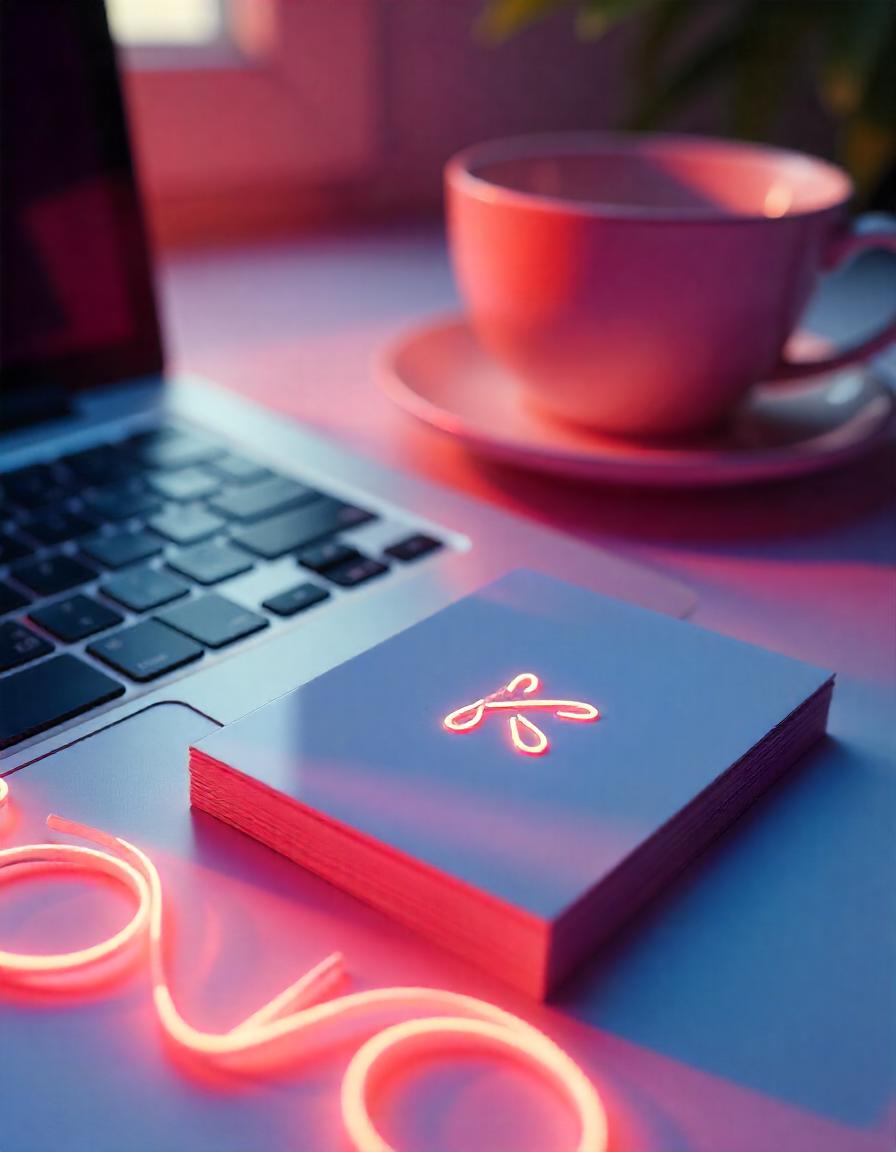
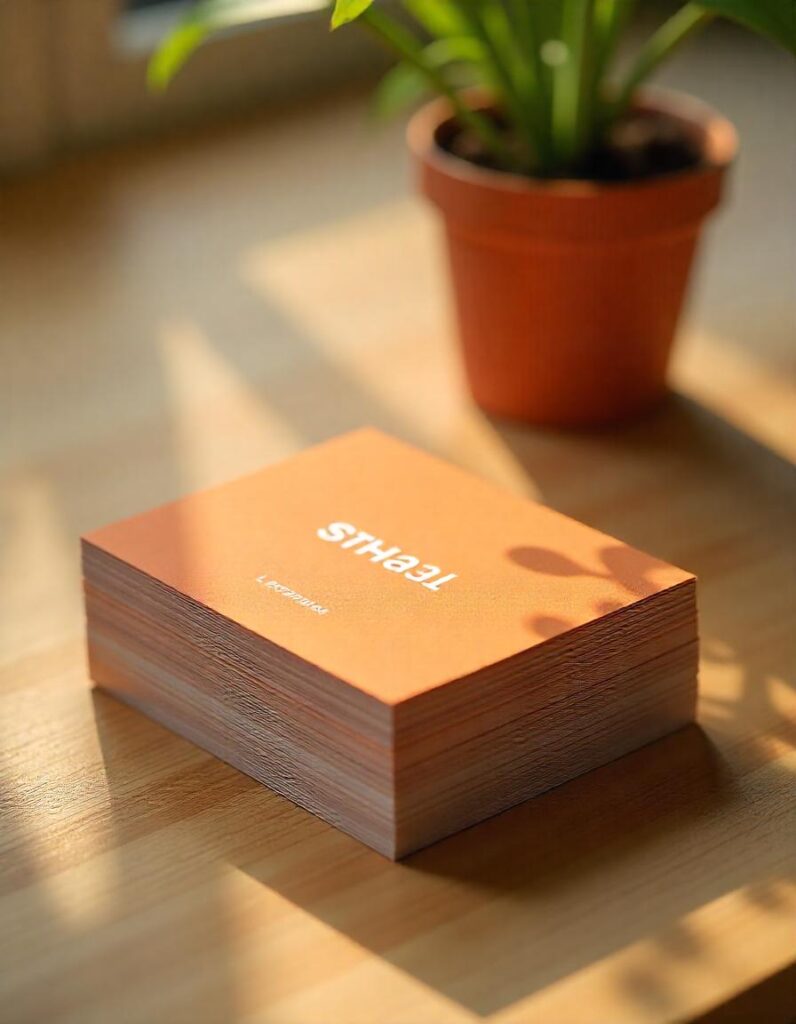
Comments are closed